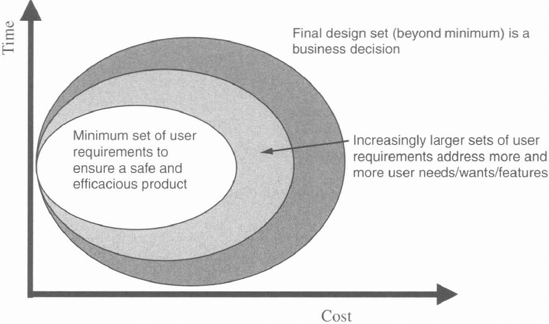26.9. Summary
Ironically, the influence of human factors engineering in product design should be transparent to the end user. When a product is well designed, users don't complain about it and probably don't even compliment it—it's expected. However, when a product is confusing to use or is uncomfortable, you will always hear about it—either in customer complaints or lack of sales!
| Discovery Process and Product Strategy | Product Requirements | Design and Development | Verification and Validation | Manufacturing | Quality Assurance and Regulatory (Safety) Issues | Product Launch and Support |
|---|---|---|---|---|---|---|
| HFE Plan User needs (profiles and context of use) HFE benchmark of existing products | HFE design guidelines
User requirements document Task analysis | Theories of operation
User interface specifications (hardware and software elements) User evaluation plan(s) and report(s) | Usability test plan
Usability report HFE design changes based on field studies | Work instructions Workstation layout | Use error analyses | Labeling and packaging specifications
Manuals and training curriculum Customer feedback surveys |
Figure 26-1. USER REQUIREMENTS DRIVING HFE TIME AND COST.

Product usability is dependent not only on a dedicated HFE team member and a good HFE program plan, but the goal of product usability and thus product success, must be valued by the entire team—including ...
Get The PDMA Handbook of New Product Development now with the O’Reilly learning platform.
O’Reilly members experience books, live events, courses curated by job role, and more from O’Reilly and nearly 200 top publishers.

